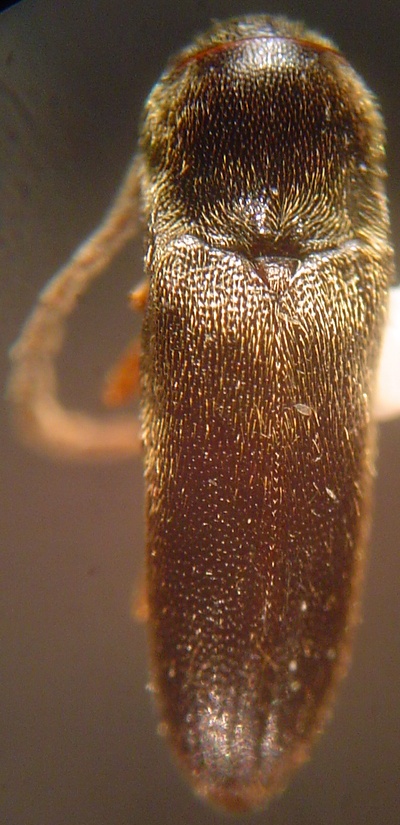
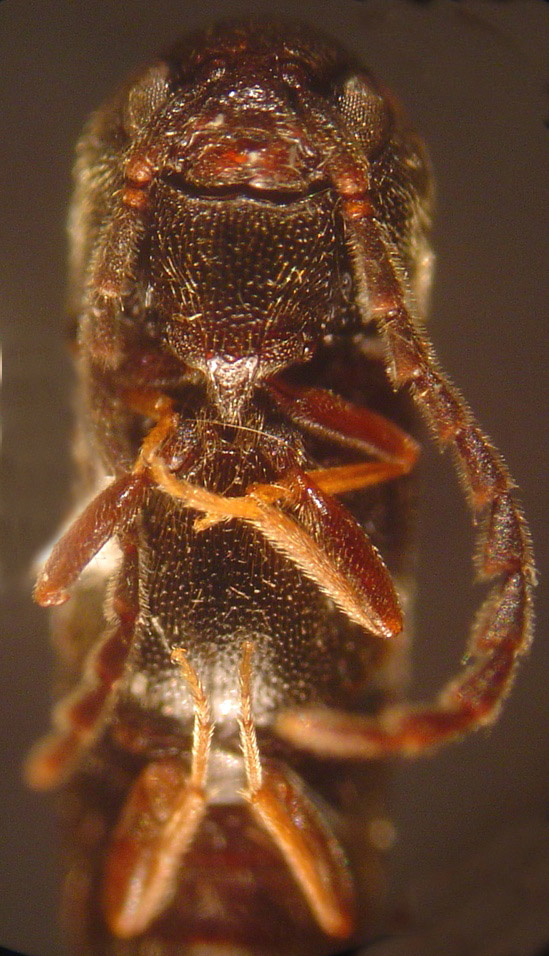
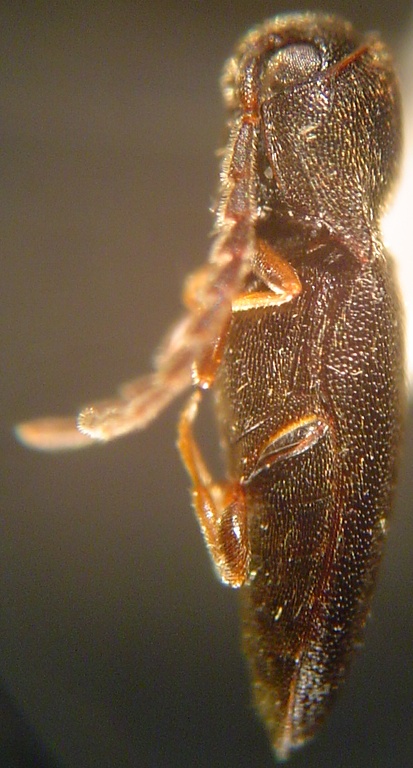

Microrhagus triangularis
dorsal habitus
Microrhagus triangularis
ventral habitus
Microrhagus triangularis
lateral habitus
Microrhagus triangularis
head & pronotum - ventral
This specimen of Microrhagus triangularis (Say) was collected on July 13, 1993 on the Medway River, Queens County, Nova Scotia, Canada by Joyce Cook in the evening using a car net. This is the first record of this species from Atlantic Canada.
The specimen is approximately 3.7 mm in length. It has deep antennal grooves and impressions on the prosternum in front of the procoxae. The clypeus has a noticeable keel above the antennal sockets. The occiput has a narrow, smooth median line. The head and pronotum are densely punctate, and the pronotum is distinctly bell-shaped. There are prominent carinae on the basal angles of the pronotuum.
The antennae are half the length of the body, and are noticeably serrate, indicating that this specimen is a male. The antennal grooves are well defined throughout their entire length, are slightly widened basally and are deep and shiny. The sutural stria on the elytra is very evident and there are basal indications of others. There is coarse, dense punctuation on virtually the entire ventral surface. Tarsomere one is much elongated and number 4 is bilobed.
Muona (2000) notes that very little is known about the bionomics of this abundant species. It has been found on Dogwood (Cornus sp.). In Canada it has hitherto been recorded in Quebec and Ontario and in the eastern United States it is found south to Florida and Texas.
Although known as the "false click beetles" Muona (2000) points out that this common name is really a misnomer since most species are able to "click" as well as members of the click beetle family, Elateridae.

|

|

|

|
|
Microrhagus triangularis |
Microrhagus triangularis |
Microrhagus triangularis |
Microrhagus triangularis |
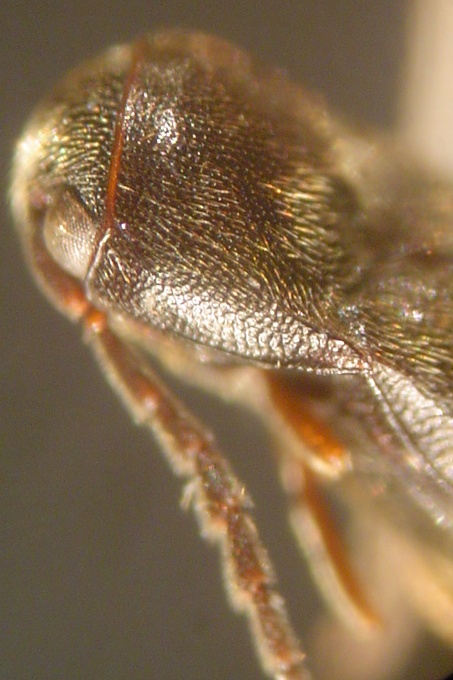
|
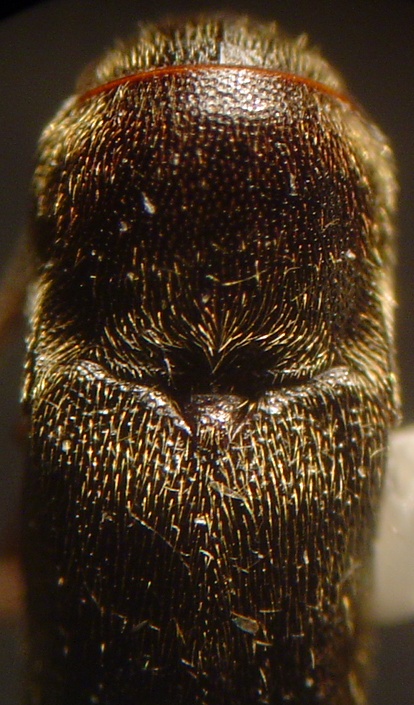
|

|
|
Microrhagus triangularis |
Microrhagus triangularis |
Microrhagus triangularis |
References
Muona, J. 2000. A revision of the Nearctic Eucnemidae. Acta Zoologica Fennica 212. 106 pp.
Muona, J. 2002. Eucnemidae Eschscholtz, 1829. In Arnett, R. H. Jr., M. C. Thomas, P. E. Skelley, & J. H. Frank [ed]. 2002. American Beetles, Volume 2: Polyphaga: Scarabaeoidea through Curculionoidea. CRC Press, Boca Raton, USA. pp. 152-157.
Thanks to both Robert Otto and Jirki Muona for assistance with the determination!
(c) All rights reserved. Christopher Majka & Empty Mirrors Press